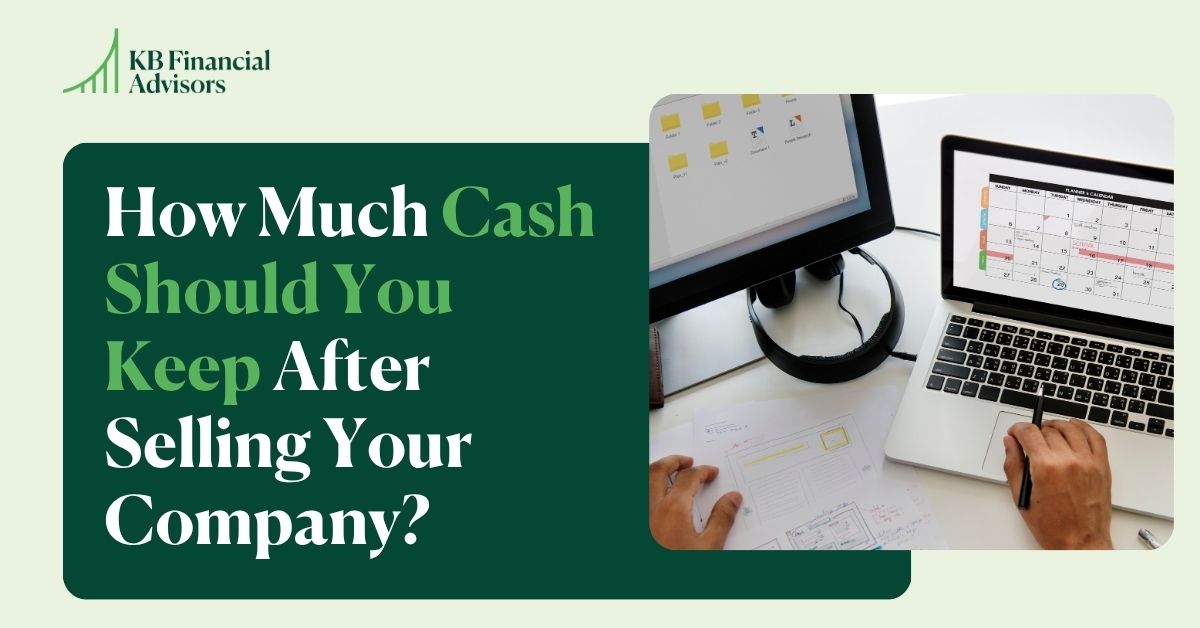A financial advisor shares how tech employees can narrow their focus to the 3 most important factors.
So, your company is going public soon and now you’re left wondering how to handle it.
First off, congrats! Your looming IPO is a big deal and a unique professional milestone not a lot of people get to experience. It also has the potential to change your life for the better.
But why doesn’t preparing to go public always feel like that? If anything, the buildup just feels like you’re adding another stressful thing to your never-ending to-do list.
As a tech employee, you’re already busy as is — and possibly burnt out — which is especially the case in the startup world. It’s understandable that deciding how to handle your IPO can feel more stressful than exciting right now.
When you’re stressed out and spread thin, you’re more likely to focus on specific details surrounding your choice rather than the key principles that should govern your thinking. In other words, before getting into specific logistics, consider the main factors that’ll determine your outcome (FYI, I’ll be using “outcome” and “net cash flow” interchangeably in this post).
Do some mental time traveling and go from present day you to a future version of yourself who’s sold around 90% of your parent equity and might not even work at the same company any longer.
This hypothetical future version of you is the outcome I want you to consider.
How much of all the value you have now will you get to keep at the end of the day? What will your net cash flow (after tax) be? How you navigate going public will determine the answers to these questions.

Navigating your IPO is like solving a problem, of which there are simple, difficult, and complex ones. The fifth-grade math problems I help my daughter with nightly are simple. They require some thought but their solutions are clear and easy to find. On the other hand, difficult problems, like building an iPhone, involve lots of factors and variables in both software and hardware development. However, there is a clear blueprint for building an iPhone. Lastly, complex problems — like your outcome navigating your employee equity — involve many uncontrollable variables that fall under the umbrella of an unknown future. What makes IPO planning especially tricky and complex is that there’s no clear right or wrong decision. That’s why it’s helpful to have principles you can operate on to guide your thoughts, decisions, and actions.
Though it’s tempting to dive right into the specific details surrounding your IPO planning, I encourage you to focus on the factors that best determine how much cash you’ll end up with. We’ll go over these three factors, along with additional tips, below:
3 key factors to focus on when your company goes public
1. Stock price
First and foremost is price. What makes price paramount is that it’s the most unlimited factor at play here. With stock price, there’s an endless range of possibilities that exist. You can have stock that’s worth as little as $0, deeming it illiquid, or a stock that’s worth around $556,117 (true story — that’s the all-time high for Berkshire Hathaway A shares). You never know how much your stock could be worth someday.
Beyond being unlimited, price also has the biggest impact on your net cash flow. For that reason alone, price should drive your decisions around when to sell, what to sell, and how much to sell.
2. Quantity
The second most important factor in determining your outcome is quantity. Quantity is the number of stock options, restricted stock units (RSUs), and/or shares you possess. Unlike price, this quantity is limited by factors like your tenure at the company and the quantity of equity you’re granted.
Quantity helps you calculate your gross payout (how much pre-tax money you’ll make by selling), which is quantity multiplied by stock price.
Gross payout = quantity x price
When dealing with factors that involve multiplication, pay very close attention; it’s much more powerful than addition and subtraction
In addition to considering how much to sell, you should also consider how much to hold onto. These are what I call “forever shares” — stock you hold onto far into the future. Forever shares should make up at least 10% of all your granted equity. The “why?” behind forever shares has to do with the complexity of an unknown future when it comes to stock performance. Though slim, there’s a chance your company will become the most valuable business in the world someday, at which point you could be looking at a stock price well into six figures. In the off chance your stock price surges to sky-high territory, you’re going to want a portion of your equity on hand. Consider holding onto at least 10% of the equity you’ve been granted.
Because price and quantity are the most important factors at play, you should be wary of strategies that involve lowering the number of stock options or shares you hold. Recycling stock options is one strategy that comes to mind, which can still be a good choice depending on your situation. Overall, avoid decisions that may force you to sell shares to generate cash because those ultimately lower your equity.
3. Taxes
The third factor to focus on is taxes, which is simply a limited percentage of a greater whole determined by price and quantity.
New cash flow = (quantity x price) – taxes
Successfully optimizing for taxes is usually no more than the difference between paying 37% and 23.8% taxes on your income. These numbers represent the top ordinary income tax rate and the top long-term capital gains (LTCG) tax rate, respectively. In the grand scheme of things, when you’re looking at millions of dollars worth of employee equity, taxes are nickels and dimes, not dollars.
When weighing taxes, it’s also important to know your break-even price. What’s the point at which the taxes stop mattering and you’re losing the advantage of holding for long-term capital gains because the price is plummeting? Remember, stock price is paramount.
Avoid this IPO planning mistake
While you should ultimately let price govern your strategy, I often see clients in your position make a common mistake: They take an inverse approach that prioritizes taxes over quantity and price.
Their misled reasoning tends to be that stock price’s unpredictability and complexity is too confusing and worrisome to deal with, so they blindly trust that the price will go up in the future. Taxes on the other hand are more certain because they follow set rules and are predictable, which gives some people a false sense of comfort with letting taxes drive the strategy. These clients will then optimize their selling plan for taxes under the assumption the price will rise, and unfortunately, some financial advisors let them take this approach without intervening, either because they don’t have a solid understanding of the consequences or they simply don’t want to walk clients through the best approach. Moral of the story is don’t let taxes drive your decision making, period.
Testing your going-public strategy
There are a few ways to test how well you apply the above three factors to your employee equity planning.
Your choices: This first test focuses on you. It looks at how you approach working with your equity, being proactive in your choices and actions, and understanding how to prioritize price, quantity, and taxes. Boiling down your top priorities to those three factors will help you escape the overwhelming worry of having to think about many things when IPO planning.
The market: Again, price is paramount. This test focuses on setting a target price for yourself. Simply put, a target price is an arbitrary number that, when reached, triggers your sale of a portion of your equity.
If you don’t set a target price, a few things can go awry:
- First, the stock can go up, which feels great to see. Who doesn’t want to watch their stock chart move up and to the right? You may feel ready to sell but a nagging feeling tells you the price might just go higher. While in this instance you recognize an opportunity to sell, you don’t have a clear signal to pull the trigger, so you opt for inaction.
- Another possibility is the stock can go down, which usually feels jarring. Though you don’t like the price you’re seeing, you may tell yourself it’ll bounce back if you just wait long enough. Wishful thinking. In this instance, you recognize a threat, but you don’t have a clear signal of when to sell.
- Lastly, the stock can crash. This can look like a 75% dip or worse. Crashes hurt… a lot. People who forgo target prices usually feel regretful when they face a crash, thinking “I should have sold at $X.” With crashes, hindsight is 20/20, but there’s still no clear signal.
You pass the market test by setting a target price and following through on it. Doing so also helps you avoid missed opportunities when your stock goes up, down, or crashes.
Here’s what using target prices can look like in practice: After seeing your current stock price, you decide that if you could sell at X price, you’d be pleased. Having that target price is like having a crystal clear signal. As soon as your stock reaches that price in an open trading window where you can sell, you know it’s time to take action. Once you’ve checked price off the list, the next step — and the next priority — is figuring out quantity. You know you’re ready to sell at X price, now you need to determine how much of your equity you want to sell at said price. Notice how taxes haven’t even entered the chat yet. Price and quantity are higher priorities.
Don’t go into an unknown future without a clear target price. And if the stock continues going up after you sell, set a new target price that’ll trigger your next sale.
Taxes: Just because price and quantity are higher priorities than taxes, doesn’t mean taxes are unimportant. If you’re dealing with millions of dollars in income, you could also be dealing with hundreds of thousands — or even millions — of dollars in taxes. The tax savings can be significant but they’re completely dependent on the stock price either staying in place or increasing. If the stock price starts falling, you need to know the break-even price and recognize how quickly you can lose the advantage of the future tax savings you’re after. So, always know what your exits are. That’s your break-even price or the point at which you decide to get out of a situation that’s no longer working for you.
You also want to avoid decisions that limit your flexibility and exit options. One of the main ways you can limit your flexibility is with incentive stock options (ISOs) and the alternative minimum tax (AMT). If you exercise a ton of stock options in December, triggering alternative minimum tax that’s due the following April, you don’t have a lot of flexibility because there’s no opportunity for you to exit from that AMT situation you just created. Now, compare that can of worms to exercising ISOs in January, which would trigger a ton of AMT. You’d have the rest of that year — all 12 months — to continue evaluating your decision based on how the stock performs. If the stock price dips and you approach your break-even price at any point in that year, you can exit and do a disqualifying disposition on those ISOs. That would let you wipe out the AMT and pay tax on the sale price instead of the price at which you exercised, lowering your tax bill.
Maintaining flexibility is the key to keeping your exit options open. You don’t ever want to get in a situation where you’re limiting your exits at the mercy of a changing stock price that makes the tax decision work against you.
You should also avoid making choices that are motivated solely by tax, like selling some of your options or shares only because you want to save on taxes. Doing so lowers your quantity of equity, which goes against the priority order we outlined earlier.
I tell my clients that the best way to think about taxes is by understanding that taxes won’t tell you what to do, but they can inform how you do it. In other words, decide what you want to do based on price and quantity, and only then let taxes inform how you take those specific actions.
Your IPO planning can be even smoother
When preparing to go public, employees can narrow their focus to stock price, quantity, and taxes. Know how to prioritize these factors and you’re well on your way to a smooth IPO experience.
You shouldn’t go at it alone though. If working with hundreds of tech employees in your position has taught me anything, it’s that even the brightest minds can make costly mistakes. No one’s born understanding every tax and finance implication there is, but experienced financial advisors who’ve seen it all can cover blind spots you don’t even know you have.
You’ve got a great opportunity in front of you. We can help you navigate it and get to the other side with clarity and confidence, not to mention increase the chances of you achieving a great outcome.



